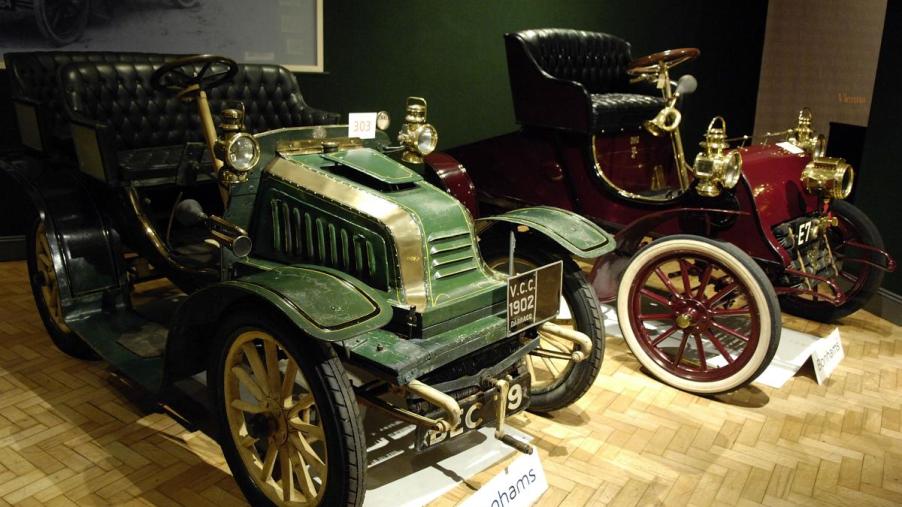
What Was the First Car Cadillac Ever Made?
Cadillac is one of the oldest and most iconic American car brands. It has stood the test of time and established itself as a leader in luxury vehicles. But before Cadillac became a force to be reckoned with, one car in particular set the course for generations of cars to come.
Let’s look back at the very first model that Cadillac ever built and how it paved the way for the brand we know today.
What is the history of Cadillac?
Cadillac was originally founded in 1902 by engineers Henry M. Leland and Robert Faulconer of the Leland & Falconer Manufacturing Company. After the dissolution of the Henry Ford Company, financial backers called in Leland to appraise the plant.
Rather than doing so, Henry M. Leland convinced the financial backers to invest in the plant, creating a car using his single-cylinder engine. But the company didn’t take long to make its mark in the industry. In five months, the Cadillac Automobile Company was successfully established.
The name “Cadillac” was derived from the French explorer and founder of Detroit in 1701, Antoine de la Mothe Cadillac. The company’s crest is based on the de la Mothe family coat of arms, an homage to the man responsible for bringing Detroit onto the world stage.
The first car Cadillac ever made
According to General Motors, the first cars to leave the Cadillac factory in 1902 were two models: the two-seater Runabout and the four-seater Tonneau. At this moment, history began to be written, as these cars were also the company’s first production car.
Cadillac displayed its first three cars at the New York Auto Show in January 1903, selling out and receiving orders for an impressive 2,286 cars. The Tonneau was the more popular of the two models, with a detachable rear end that allowed passengers to enter through the rear door without getting their shoes dirty.
The initial price tag for the Tonneau was 850 dollars: 750 for the car and 100 for the Tonneau. Additional features like leather or rubber tops and side curtains were offered for 50 dollars, while the head and side lamps could be bought as extras.
Under the hood, the Tonneau had a front false bonnet with a radiator mounted below it. The radiator was connected to a 1,609 cc (98.187 cu-inch) naturally aspirated single-cylinder petrol engine. This engine breathed through one intake and one exhaust valve and produced 6.5 BHP, allowing for impressive performance capabilities for the period.
According to The Transport Journal, the Tonneau could reach impressive top speeds of up to 56 km/h (35 mph) and climb inclines easily, quickly earning it a reputation as a reliable and easy-to-maintain vehicle.
Such performance capabilities saw the Tonneau compete in the Sunrising Hill Climb in the UK in 1903 and be the only single-cylinder car to reach the top. It was also one of four cars to complete the 1,000-mile reliability trial that same year and the only one in its class to do so.
The car was 2807 mm (110.5″) long, 1613 mm (63.5″) wide and 1480 mm (58.25″) tall (without the roof). It weighed a total of 621 kg (1,369 lb). The suspension was made up of semi-elliptical leaf springs, and it had drum brakes on each wooden wheel to provide the stopping power.
The Tonneau was truly ahead of its time and set the course for Cadillac’s path to becoming one of the world’s most recognizable luxury car brands.
The legacy of the brand
While the first Cadillac was truly ahead of its time, it also laid the foundation for what would eventually become a leader in luxury vehicles. From receiving the prestigious Dewar Trophy in 1908 to introducing the first mass-produced V8 engine in 1915, Cadillac has long held its own as a leader in automotive innovation.
In addition to introducing new comfort features like power steering and air conditioning, Cadillac also set itself apart with its customization options. Customers could choose from over 500 color combinations and 50 different body styles to make their car unique. This attention to detail and commitment to quality continues today in vehicles like the CTS Sedan and XT5 Crossover.
The first-ever Cadillac was more than just a car – it was an innovation that set the tone for future generations of cars. It revolutionized customer service, comfort features, design, and performance capabilities. It has secured its place in automotive history and is a testament to the ingenuity of its creators.



